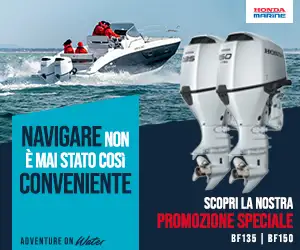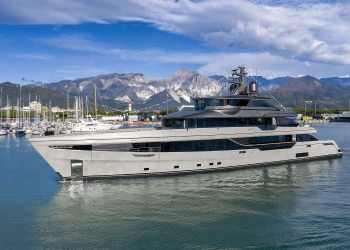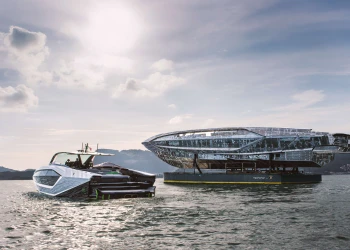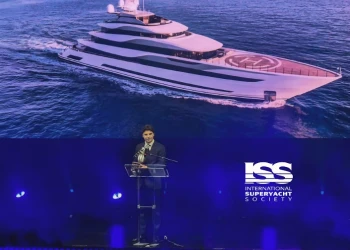
TISG firmly denies the absurdities published by The NY Times and takes legal action
TISG firmly denies the absurdities published by The NY Times and takes legal action
The Italian Sea Group (“TISG” or the “Company”) announces that it has instructed its lawyers to take action against the New York Times for
the article published on October 31st, 2024. The article reported a narrative about the sinking of the Bayesian, which was completely
devoid of technical consistency without mentioning the source which, if truly qualified, would have had no problem being quoted.
Whereas in January 2021 TISG acquired from a bankruptcy auction the Perini Navi brand, the archives, and the real estate part of Perini Navi, and therefore cannot in any way be held responsible for any event possibly referable to the sinking, the company wants to take action against the American newspaper for the image damage referable to the brand and reputation of Perini Navi, so far a symbol of technological perfection and the highest expression of Italian yachting in the world.
1. Sloop versus ketch: The NYT attributes undocumented instability to the single-mast design choice: the Bayesian while having a stability curve slightly different from a ketch, still fully and largely complies with the stability criteria set by the Maritime Coastguard Agency for commercial sailing vessels.
2. “More than a dozen naval architects, engineers and other experts consulted by the Times found glaring weaknesses in the Bayesian’s design that they say may have contributed to the disaster.” The Bayesian was designed by one of the world's most famous naval architects, Ron Holland, while we do not read any names of these self-proclaimed designers who apodictically state that the yacht offers obvious weaknesses.
3. Doors and hull openings:
The NYT argues that they may represent a weakness: TISG points out that the doors mentioned are watertight as required by regulations and can only cause progressive flooding if left open and at heeling angles greater than 30°, so they cannot in any way represent a design flaw or weakness if operated properly. These doors are monitored and alarmed and must be operated in accordance with the instruction manual to the commander as reported in Chapter 5 of the Stability Booklet.
4. With reference to the aforementioned alleged vulnerabilities of the Bayesian in the presence of adverse weather conditions, TISG convincingly responds that any vulnerabilities could result solely from faulty procedures, specifically:
- Strong gust: if the yacht is properly maneuvered, bringing the bow into the wind using the engines, the gust is ineffective in rolling the boat.
- Doors and openings: water can only enter through openings if they are not properly closed
- Retractable keel: obviously if extended it increases stability.
TISG stresses that all the technical documents were physically checked and validated during the on-board stability test in the presence of class and flag surveyors. It also reiterates that all the potential openings or downflooding points were protected and equipped with watertight closing means, most of which were remotely operated.
5. “The ballast appears to have been pushed towards the rear of the vessel to compensate for the single, heavy mast closer to the front,” concluded Mr Tad Roberts. He said he had never seen main ballast used in such a design tactic before.” The fixed ballast was placed on the aft end of the skeg to balance the weight of the single mast, which was further forward than on the sister ketch yachts. This arrangement did not in any way compromise the fixed ballast centre of gravity height on Bayesian. Every expert naval engineer can confirm that.
6. “A sunken deck reduced the buoyancy of the vessel, the naval architects said.” Again, this statement is not supported by any further analysis or consideration. This arrangement can reduce buoyancy but only at very high heel angles and does not affect the regulatory stability requirements. This area is also equipped with freeing port drains to drain any water that might become trapped there.
7. “In particular, the data shows that the two-masted vessel could list at least 10 degrees more on its side before taking on dangerous quantities of water.” (omitted…) “The documents also show that the Bayesian could start taking on water at angles that appear to breach the safety threshold set by the British Maritime and Coastguard Agency.”
TISG strongly disputes these claims, which not only are not supported by appropriate details, but they are completely false. Once again, it reiterates that the Stability Booklet is MCA approved, therefore fully compliant with the applicable regulations and that the angle of inclination at which the first significant opening immerses causing the flooding of the yacht's engine room is 42.7°. It is emphasized that these openings are in any case protected by remotely controlled watertight closures.
8. With reference to what was stated by the two Spanish naval engineers, Guillermo Gefaell and Juan Manuel López, TISG specifies that the calculated heel angle with 60 knots of crosswind is approximately 18 degrees and therefore in adequate conditions cannot lead to the immersion of any downflooding point (at 80 knots of wind the heel angle is approximately 28 degrees). In order to have a water ingress of 1 tonne per second as stated above, the engine room ventilation opening would have had to be completely immersed at about 3m depth and this condition cannot be achieved even with a complete capsize (heeling of 90° or more). TISG highlights that that night the wind gusts reached 60 knots for only about 1.5/2 minutes. Therefore, with such wind pressure the vessel would have listed by 18 degrees, which confirms the total absence of risk, even in the hypothesis that the crew had not carried out all the necessary activities correctly. It follows that, in such conditions, the only cause of greater heeling angle is due to the flooding of more than one compartment. In light of the aforementioned technical considerations, TISG firmly reiterates the unsinkability of the Bayesian sailing yacht, if properly sailed and operated.
The Company is certain that the Italian investigators who are investigating the matter will clarify the reasons for the entry of water on board.







